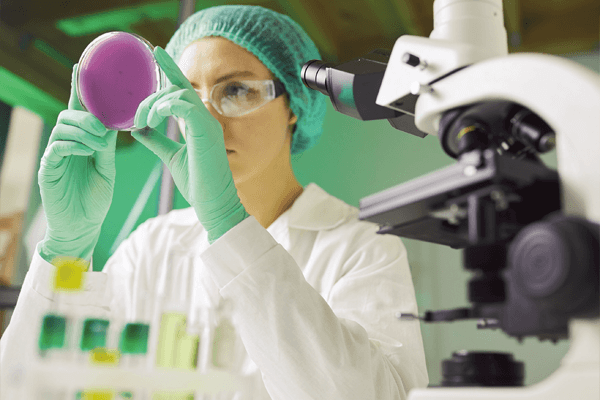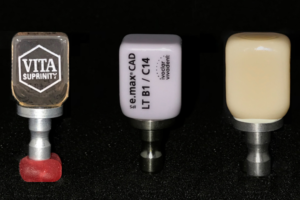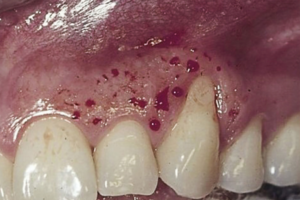Trabalho identifica se as membranas biológicas empregadas nos procedimentos de regeneração tecidual guiada e regeneração óssea guiada são permeáveis às bactérias.
AUTORES
Ana Clara Kuerten Gil
Graduanda em Odontologia – Universidade do Sul de Santa Catarina.
Orcid: 0000-0001-5544-8310.
Daniela Peressoni Vieira Schuldt
Mestra em Endodontia – Universidade Federal de Santa Catarina; Professora de Endodontia e Periodontia – Unisul.
Orcid: 0000-0002-2289-2690.
Beatriz Serrato Coelho
Especialista, mestra e doutora em Endodontia – Universidade Positivo; Professora de Endodontia – Unisul.
Orcid: 0000-0001-5956-4001.
Daniela de Rossi Figueiredo
Mestra e doutora em Saúde Coletiva, e pós-doutora em Enfermagem – UFSC; Professora de Saúde Coletiva – Unisul.
Orcid: 0000-0002-7817-2027.
Guenther Schuldt Filho
Especialista, mestre e doutor em Implantodontia – UFSC; Professor de Periodontia – Unisul.
Orcid: 0000-0002-4462-358X.
Josiane de Almeida
Especialista em Endodontia – Universidade Estadual de Londrina; Mestra e doutora em Endodontia, e pós-doutora em Engenharia Química – UFSC.
Orcid: 0000-0002-6120-5996.
RESUMO
Objetivo: identificar, por meio de uma revisão integrativa, se as membranas biológicas empregadas nos procedimentos de regeneração tecidual guiada (RTG) e regeneração óssea guiada (ROG) são permeáveis às bactérias. Material e métodos: a busca na literatura foi conduzida usando as seguintes bases de dados: PubMed, Scientific Electronic Library Online (SciELO) e Latin American and Caribbean Health Sciences Literature (Lilacs). Foram usados os seguintes descritores e suas combinações: [guided tissue regeneration*] OR [guided bone regeneration*] OR [absorbable membrane*] OR [nonabsorbable membrane*] AND [bacteria*] OR [microrganisms*]. Após a aplicação dos critérios de inclusão e exclusão, oito artigos foram selecionados e uma avaliação e síntese qualitativa, por roteiro validado na literatura, foram realizadas. Resultados: diferentes tipos de membranas foram estudados, como e-PTFE, d-PTFE, colágeno, glicólida, ácido poliglicólico e ácido polilático. A penetração de diversas espécies bacterianas, com destaque para P. gingivalis, S. mutans, A. actinomycetemcomitans, F. nucleatum e S. oralis, foi avaliada por MEV, análise histológica ou contagem de unidades formadoras de colônias, em períodos que variaram entre duas horas e quatro semanas. Membranas incorporadas com antimicrobianos demonstraram um retardo na penetração bacteriana. No entanto, a maioria das membranas mostrou-se permeável às bactérias. Conclusão: a presente revisão integrativa identificou oito estudos em que a maioria das membranas reabsorvíveis e não reabsorvíveis utilizadas em regeneração tecidual guiada e regeneração óssea guiada permitiu a penetração bacteriana.
Palavras-chave – Membranas biológicas; Penetração bacteriana; Periodontia; Regeneração tecidual guiada; Regeneração óssea guiada.
ABSTRACT
Objective: to identify using a literature review whether barrier membranes used in guided tissue regeneration (GTR) and guided bone regeneration (GBR) are permeable to bacteria. Material and methods: the literature research was made using the following database: PubMed, Scientific Electronic Library Online (SciELO), and Latin American and Caribbean Health Sciences Literature (Lilacs). The following descriptors and their combinations were used: [guided tissue regeneration*] OR [guided bone regeneration*] OR [absorbable membrane*] OR [nonabsorbable membrane*] AND [bacteria*] OR [microrganisms*]. After applying inclusion and exclusion criteria, 8 articles were analyzed according to the proposed objective. Results: different types of membranes were studied, such as e-PTFE, d-PTFE, collagen, glycolide fiber, polyglycolic acid and polylactic acid. The penetration of diverse bacteria species, such as P. gingivalis, S. mutans, A. actinomycetemcomitans, F. nucleatum and S. oralis, was evaluated by means of scanning electron microscopy, histological analysis or colony forming units counting, in experimental periods that varied from 2 hours to 4 weeks. Membranes incorporated with antimicrobials demonstrated a delay on bacterial penetration. However, the majority of the membranes showed permeability to the bacteria. Conclusion: the present integrative review identified 8 articles, in which the majority of resorbable and non-resorbable membranes used in GTR and GBR procedures allowed bacteria penetration.
Key words – Barrier membranes; Bacterial penetration; Periodontics; Guided tissue regeneration; Guided bone regeneration.
Recebido em ago/2020
Aprovado em ago/2020
Referências
- Liu J, Kerns DG. Mechanisms of guided bone regeneration: a review. Open Dent J 2014;8(1):56-65.
- Naung NY, Shehata E, Van Sickels JE. Resorbable versus nonresorbable membranes. When and why? Dent Clin North Am 2019;63(3):1-13.
- Jalaluddin M, Patel RKV, Almaki SA, Nagdev P, Roshan R, Varkey RR. Assessment of the efficacy of periodontal tissue regeneration using non-resorbable and bioabsorbable GTR membrane – a clinical comparative study. J Contemp Dent Pract 2019;20(6):675-9.
- Krauser JT, Bartee BK, Garg AK. Membrane barriers for guided tissue regeneration. In: Babbush CA, Hahn JA, Krauser JT, Rosenlicht JL. Dental implants: the art and science. Missouri: Saunders Elsevier, 2011. p.181-215.
- Cheng CF, Wu KM, Chen YT, Hung SL. Bacterial penetration through antibiotic-loaded guided tissue regeneration membranes. J Periodontol 2009;80(9):1471-8.
- Trobos M, Juhlin A, Shah FA, Hoffman M, Sahlin H, Dahlin C. In vitro evaluation of barrier function against oral bacteria of dense and expanded polytetrafluorethylene (PTFE) membranes for guided bone regeneration. Clin Implant Dent Relat Res 2018;20(5):1-11.
- Slutzkey S, Kozlovsky A, Artzi Z, Matalon S. Collagen barrier membranes may accelerate bacterial growth in vitro: a potential clinical risk to regenerative procedures. Quintessence Int 2015;46(1):43-6.
- Rani S, Chandra RV, Reddy AA, Reddy BH, Nagarajan S, Naveen A. Evaluation of the antibacterial effect of silver nanoparticles on guided tissue regeneration membrane colonization – an in vitro study. J Int Acad Periodontol 2015;17(3):66-76.
- Xue J, He M, Liu H, Niu Y, Crawford A, Coates PD et al. Drug loaded homogeneous electrospun PCL/gelatin hybrid nanofiber structures for anti-infective tissue regeneration membranes. Biomaterials 2014;35(34):9395-405.
- Xue J, Shi R, Niu Y, Gong M, Coates P, Crawford A et al. Fabrication of drug-loaded anti-infective guided tissue regeneration membrane with adjustable biodegradation property. Colloids Surf B Biointerfaces 2015;135:846-54.
- Chen P, Wu Z, Leung A, Chen X, Landao-Bassonga E, Gao J et al. Fabrication of a silver nanoparticle-coated collagen membrane with anti-bacterial and anti-inflammatory activities for guided bone regeneration. J Biomed Mater Res 2018;13(6):065014.
- Lian M, Sun B, Qiao Z, Zhao K, Zhou X, Zhang Q et al. Bi-layered electrospun nanofibrous membrane with osteogenic and antibacterial properties for guided bone regeneration. Colloids Surf B Biointerfaces 2019;1(176):219-29.
- Rudolf JL, Moser C, Sculean A, Eick S. In-vitro antibiofilm activity of chlorhexidine digluconate on polylactide-based and collagen-based membranes. BMC Oral Health 2019;19(1):291.
- Ricci G, Rasperini G, Silvestri M, Cocconcelli PS. In vitro permeability evaluation and colonization of membranes for periodontal regeneration by porphyromonas gingivalis. J Periodontol 1996;67(5):490-6.
- Samuel GO, Hoffmann S, Wright RA, Lalu MM, Patlewicz G, Becker RA et al. Guidance on assessing the methodological and reporting quality of toxicologically relevant studies: a scoping review. Environ Int 2016;92-93:630-46.
- Simion M, Tristi P, Maglione M, Piatelli A. A preliminary report on a method for studying the permeability of expanded polytetrafluorethylene membrane to bacteria in vitro: a scanning electron microscopic and histological study. J Periodontol 1994;65(8):755-61.
- Simion M, Tristi P, Maglione M, Piatelli A. Bacterial penetration in vitro through GTAM membrane with and without topical chlorhexidine application. A light and scanning electron microscopic study. J Clin Periodontol 1995;22(4):321-31.
- Hung SL, Lin YW, Wang YH, Chen YT, Su CY, Ling LJ. Permeability of Streptococcus mutans and Actinobacillus actinomycetemcomitans through guided tissue regeneration membranes and their effects on attachment of periodontal ligament cells. J Periodontol 2002;73(8):843-51.
- Milella E, Ramires PA, Brescia E, La Sala G, Di Paola L, Bruno V. Physicochemical, mechanical, and biological properties of commercial membranes for GTR. J Biomed Mater Res 2001;58(4):427-35.
- Ling LJ, Hung SL, Lee CF, Chen YT, Wu KM. The influence of membrane exposure on the outcomes of guided tissue regeneration: clinical and microbiological aspects. J Periodont Res 2003;38(1):57-63.
- Olsson J, van der Heijde Y, Holmberg K. Plaque formation in vivo and bacterial attachment in vitro on permanently hydrophobic and hydrophilic surfaces. Caries Res 1992;26(6):428-33.
- Wang HL, Yuan K, Burgett F, Shyr Y, Syed S. Adherence of oral microorganisms to guided tissue membranes: an in vitro study. J Periodontol 1994;65(3):211-8.





